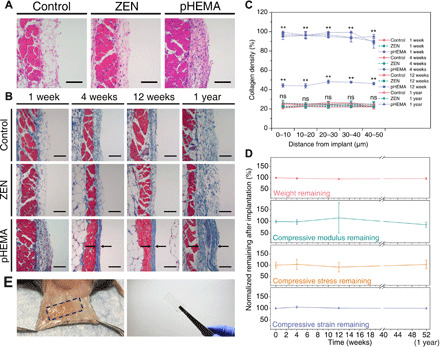Fig. 4. pCB/pSB ZEN hydrogels present long-term fibrous capsule resistance and durability after subcutaneous implantation in mice up to 1 year.

(A and B) H&E staining for skin tissues in contact with the ZEN and pHEMA hydrogels after 1 week of implantation (A). The basophilic discoloration and increased cell counts (stained dark purple) at the interface in contact with pHEMA hydrogels indicate the accumulation of cells into the interface. Masson’s trichrome staining for skin tissues with different hydrogel samples after implantation for 1, 4, and 12 weeks, and 1 year (B). Black arrows indicate the fibrous capsule. Positive controls were skin tissues collected from mice that were implanted with pHEMA hydrogels, while negative controls were collected from mice that did not undergo any surgeries or other experiments. Scale bars, 100 μm. n = 3 for all the implantation experiments (three mice per experiment group/condition and two hydrogel samples per mouse for ZEN or pHEMA hydrogels implantation). (C) Collagen density in the skin tissues adjacent to the hydrogel samples after implantation for 1, 4, and 12 weeks, and 1 year. Data were collected in the skin tissues within 50 μm from the interface (at 10-μm increments). **P < 0.01 versus control; ns, no statistical difference versus control. (D) Normalized dry weight and compressive strength (compressive modulus, stress, and strain) remaining of the ZEN hydrogels during the implantation for 1 year. All data were normalized to that of the original ZEN hydrogels before implantation (0 weeks). (E) Representative images of the implanted mice and retrieved ZEN hydrogels after 1-year implantation. Photo credit: C. Tsao (University of Washington).
